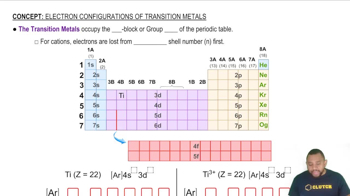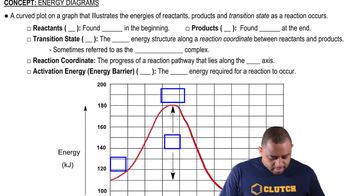Here are the essential concepts you must grasp in order to answer the question correctly.
Transition Metals
Transition metals are elements found in the d-block of the periodic table, characterized by their ability to form variable oxidation states and complex ions. They have partially filled d-orbitals, which play a crucial role in bonding and the formation of compounds. Understanding their electronic configuration is essential for predicting their chemical behavior and the nature of metal-metal bonds.
Recommended video:
Energy Level Diagrams
Energy level diagrams visually represent the arrangement of electrons in an atom or molecule, showing the energy levels of different orbitals. In the context of transition metals, these diagrams help illustrate how d-orbitals are filled and how they interact during bond formation. For Sc2, focusing on the 3d orbital allows for a simplified view of the bonding interactions between the two scandium atoms.
Recommended video:
Metal-Metal Bonding
Metal-metal bonding occurs when two metal atoms share electrons, leading to the formation of a bond. In transition metal compounds, these bonds can involve d-orbitals, which contribute to the overall stability and properties of the molecule. Understanding the nature of these bonds is crucial for analyzing the electronic structure and reactivity of metal clusters like Sc2.
Recommended video:



